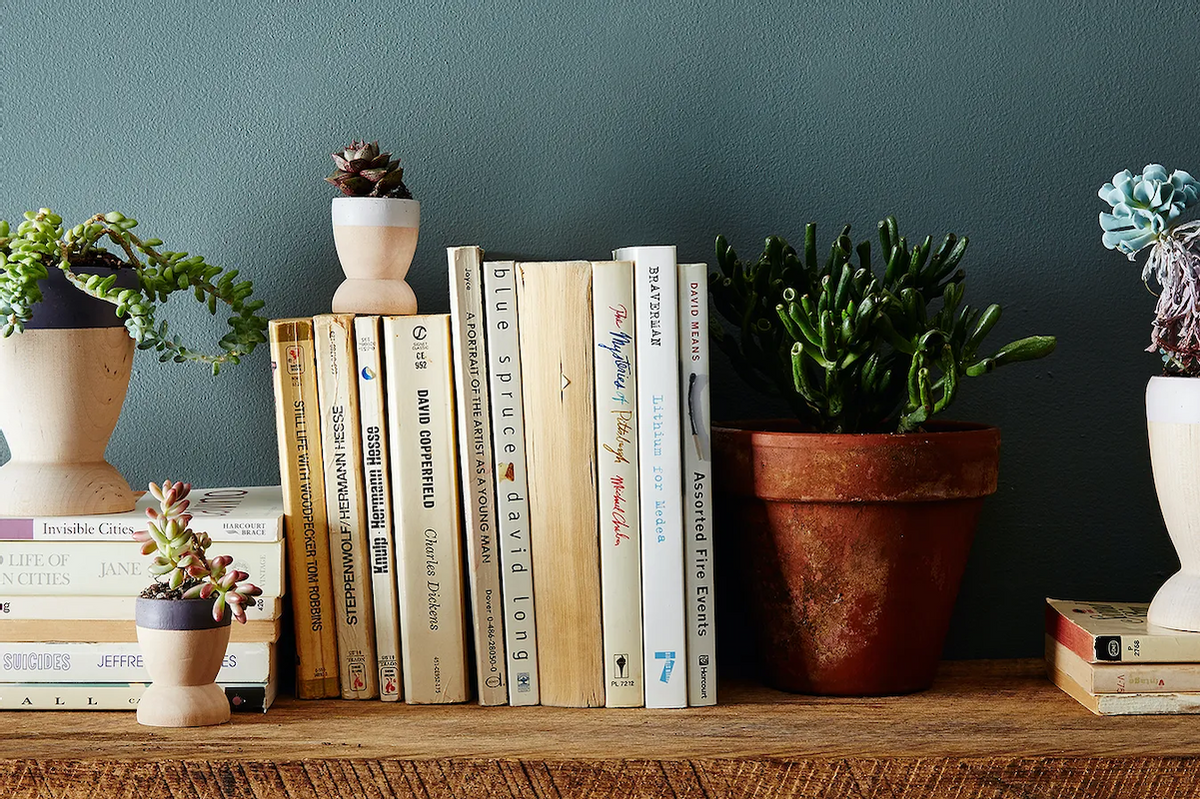Even if you've never given indoor air quality much thought, the past two years have likely changed that. HEPA air cleaners and negative air machines have become conversation topics, and indoor air quality is very much on everyone's mind. You might be contributing to better air quality already, though, with your collection of indoor plants.
We've actually known that houseplants can do quite a bit to improve air quality since 1989, when NASA conducted a study to determine how popular houseplants contribute to air quality by removing toxins. Ever since, the plants that improve air quality have been nicknamed "NASA-approved plants".
Since NASA conducted its study more than three decades ago, indoor air quality has become an even more pressing issue, because our buildings are much better insulated. This made them more energy-efficient but they also trap pollutants indoors. This, combined with so many people seriously getting into houseplants, makes it worth another look at how phytoremediation — the use of plants to remove pollutants — works, and which plants can improve the air quality in your home or office.
How plants clean the air
The three toxins included in the NASA study are benzene, formaldehyde, and trichloroethylene (TCE), and these volatile organic compounds are virtually everywhere. Benzene is in glues, paints, furniture wax, and detergents. Formaldehyde is in composite wood products such as plywood, as well as in building materials and insulation, glues, permanent press fabrics, paints, coatings, lacquers, finishes, as well as paper products. Trichloroethylene is in cleaning wipes, aerosol cleaning products, paint removers, spray adhesives, carpet cleaners, and spot removers.
The study looked at how the leaves, roots, soil, and associated microorganisms of plants reduce indoor air pollutants. It found that the plant root zone plays the biggest role. For your indoor plants, it means that the more plant roots and soil area are exposed to air, the better the plant purifies the air. In other words, larger pots or containers with a bigger soil surface are better than smaller ones.
The NASA Clean Air Study also combined the plants with activated carbon filters that purified large volumes of polluted air, thereby speeding up the air-cleaning process. While installing carbon filters is not something most of us will do in our homes, the findings on houseplants stand on their own and have become like the golden reference list for air-purifying houseplants. Newer studies, however, have found that the air-purifying effect of plants occurs at such a small rate that it might not make a difference in a large room. Still, given the many other benefits of houseplants, even a little is a good enough reason to have them around.
The NASA-approved list of plants
In space, there's no sky to create ambient light, so all the plants included in the NASA Clean Air Study require low light to grow. And that's ideal — you don't need a room with a large sunny window for those plants, you can put them in virtually any room, even in a bathroom. I've had two large peace lilies in my basement office for many years, surviving just fine in the limited light from two small windows. And you don't necessarily need a big green thumb here — some of the NASA-accepted plants are also on the list of plants that are hard to kill.
The only caveat is that with two (noted) exceptions, all the plants on the list are toxic to pets. If you have a puppy nibbling on just about anything, make sure to put the plants higher up and out of reach.
1. Bamboo Palm (Chamaedorea Seifritzii)
A low-maintenance palm that filters out benzene, formaldehyde, and TCE. It is not toxic to pets.
2. Corn Plant (Dracaena Deremensis)
A tall and narrow houseplant that removes benzene and formaldehyde.
3. Chinese Evergreen (Aglaonema Modestum)
A slow-growing plant that is valued for its color variations. It reduces the level of benzene and formaldehyde in the air.
4. Dragon Tree (Dracaena Marginata)
A tough, palm-like plant that filters out benzene, formaldehyde, and TCE.
5. English Ivy (Hedera Helix)
A low grower that is also suitable for hanging baskets. It removes benzene, formaldehyde, and TCE.
6. Gerbera Daisy (Gerbera Jamesonii)
In order for it to bloom, Gerbera daisy needs bright sun for a few hours, ideally in the morning. It reduces the benzene, formaldehyde, and TCE levels in the air.
7. Golden Pothos (Cindapsus Aureus)
Easy-to-grow vining plant with waxy leaves. It filters out benzene, formaldehyde, and TCE.
8. Green Spider Plant (Chlorophytum Elatum)
A popular hanging plant that propagates prolifically and is good for formaldehyde removal. It is not toxic to pets.
9. Snake Plant (Sansevieria Trifasciata)
Also known as Mother-in-Law's Tongue, this tough succulent filters out benzene, formaldehyde, and TCE.
10. Peace Lily (Spathiphyllum)
Probably the most ubiquitous and well-known of the air-purifying plants, it reduces the level of benzene, formaldehyde, and TCE.
11. Pot Mum (Chrysanthemum X Morifolium)
Also known as a florist's daisy or hardy garden mum, it needs direct sunlight to bloom. It filters out benzene, formaldehyde, and TCE.
12. Weeping Fig (Ficus Benjamina)
One of the taller air-purifiers, the ficus removes formaldehyde.




Shares